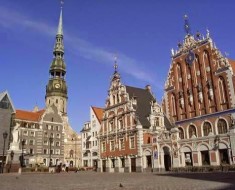Britain’s sixth largest city and gateway to England’s South West, Bristol made its wealth by ship-building and sea traffic much of which consisted of the slave trade. This year’s by-centenary of the abolition of the slave trade in 1807 has highlighted a part of history easily forgotten. Although few slaves were brought to Britain, more than 2,000 slaving ships were fitted out in Bristol. The abolitionist Thomas Clarkson collected evidence in the Seven Stars pub which is still standing, information that helped William Wilberforce and others eventually to succeed in their aim to make the appalling trade illegal. But the city is notable for many other more positive achievements.
In the 19th.century Samuel Plimsoll was shocked by the danger for crews sailing in over-loaded ships and successfully fought for a compulsory loadline on ships. The amazing Victorian engineer Isambard Kingdom Brunel – rich in character if small in stature -designed the Great Western Railway between Bristol and London as well as the Clifton Suspension Bridge, still one of the most beautiful sights of the city.
He also pioneered steam ships, one of which, the SS Great Britain has been renovated and is on view to the public. John Wesley, the founder of Methodism, built his first Chapel here in Bristol in 1739. The New Room is still in use and is open to the public. John Cabot the Italian navigator and explorer settled in Bristol in 1494, receiving the backing from Bristol merchants that Spain and Portugal had failed to give him for his exploration of North America. In 1897 the 32.4m Cabot Tower was erected high on the top of a hill and can be seen from many parts of the city.
Bristol was badly bombed in the early years of the 1939-45 war. At that time my mother and I were living in the country 20 miles or so from the city and at night, as the city burned, we could see a red glow in the sky.
Now it is in another sort of turmoil. Following the ill-advised re-building of the 1950’s, another attempt is being made to build a central shopping and business area , and one fears that it may be no better than the previous fiasco. Bristol lacks architectural coherence and the noble and interesting buildings that remain stand as wounded remnants of what might have been.
However this is a city of many cultural delights as well as culinary pleasures. There is an enterprising Museum, Art Galleries and the fascinating Harbourside development is full interest for people of all ages. My wife and I were at University and College here in the late 1950’s, which is how we met. I had my first job in Bristol. So, despite its disappointments, this is still a special place for us.
B.R.



